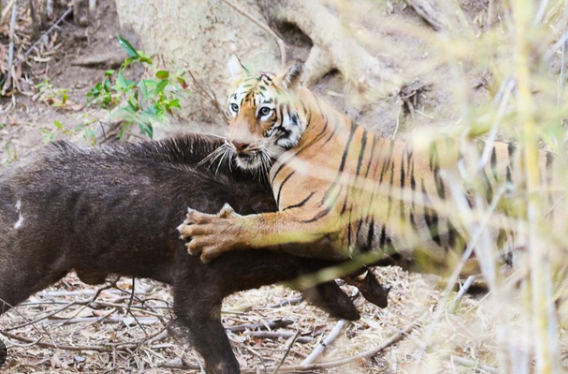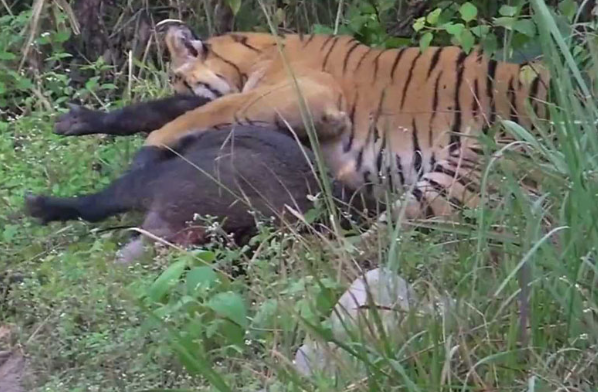Photographer MD Parashar visiting Ranthambore National Park in Rajasthan, northern India was lucky enough to witness a fight between tigers and wild boars rarely seen in the wild.
The video, which lasts about 20 seconds, shows a tiger struggling with a wild boar. The couple clashed between the fallen leaves and the trunks of the forest.

MD Parashar shared that the images were taken at around 8:50 a.m. local time inside the Indian national park. The tiger in a life-and-death battle with wild boar is named Noor Tigress T-39.
The wild boar is large, but it doesn’t seem to cause much trouble for the tigress. After a long struggle, the wild boar finally lost. The tiger bit hard on the back of the Indian wild boar as the animal struggled.

The tiger used its big paw to hit the wild boar in the face, it grumbled and cried out, tried to run away but failed.
The Indian wild boar is distinguished from its European counterpart with its large body size, larger skull and smaller ears. An adult Indian wild boar can weigh up to 136 kg.
Wild boar in India is a famous prey of tigers. Tigers also eat smaller animals like birds and rodents and even larger objects like deer and elephants.

Noor Tigress is on the endangered tiger list listed on the Ranthambore National Park website. This tigress gave birth to several litters of tiger cubs between 2012 and 2016.
Tigers like Noor are listed by the International Union for Conservation of Nature (IUCN) on the Red List of Endangered Species. The agency estimates there are about 3,500 big cats left in the wild.

Notably, tiger populations have rebounded in India in recent decades after a government-led initiative called ‘Project Tigers’.
The project declared the tiger the national animal of India and stepped up conservation efforts. The 2018 report on the state of tigers in India said there are an estimated 2,967 animal species in the country, more than four-fifths of the global total. This represents a significant increase from the 2010 estimate of 1,706 tigers.